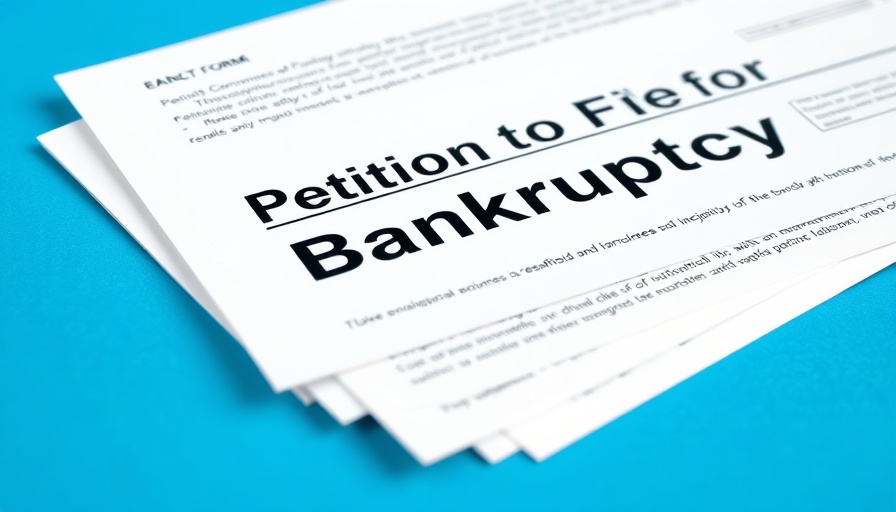
Understanding Bankruptcy: A Fresh Start for Your Finances
In a world where financial stability can seem elusive, knowing your options regarding debt relief is crucial. Bankruptcy is a legal remedy designed to clear overwhelming financial burdens, allowing individuals and businesses to regain control of their economic future. While it offers a fresh start, it’s essential to understand the various types of bankruptcy to make informed decisions best suited to your unique situation.
How Does Bankruptcy Work?
The bankruptcy process is governed by federal law, which provides a structured approach for individuals and businesses to seek relief from debt. Here's a look at the key steps typically involved:
- Filing a Petition: The debtor submits a formal request to the bankruptcy court.
- Credit Counseling: Debtors are usually required to undergo credit counseling within 180 days of filing.
- Automatic Stay: A legal protection halts most collection actions like foreclosure or wage garnishment.
- Appointing a Trustee: A court-appointed trustee oversees the bankruptcy process.
- Debt Discharge or Plan Approval: Depending on the bankruptcy type, either debts are eliminated, or a repayment plan is established.
Types of Bankruptcies: Navigating Your Options
The U.S. Bankruptcy Code has several chapters specifically tailored to different financial circumstances. Understanding these can help you choose the right path:
Chapter 7: Liquidation Bankruptcy
Chapter 7 is one of the most common forms of bankruptcy for individuals and small businesses that cannot meet their debt obligations. Here's how it works:
- The trustee liquidates non-exempt assets and uses the proceeds to pay creditors.
- Unsecured debts like credit cards and medical bills are often discharged, offering a fresh financial start.
Eligibility is determined by a means test assessing the debtor's income, ensuring it is low enough to justify this type of bankruptcy.
Chapter 13: Repayment Plan
Designed for individuals with a consistent income, Chapter 13 allows debtors to organize a court-approved repayment plan, which generally spans three to five years. This type of bankruptcy:
- Enables those facing foreclosure to restructure their debts and keep their assets.
- Requires unsecured debt to remain below $465,275 and secured debt under $1,395,875 (as of 2025).
However, missed payments can lead to dismissal or conversion to Chapter 7, underlining the importance of financial discipline during the plan.
Chapter 11: Business Reorganization
Primarily used by businesses, Chapter 11 provides an opportunity to restructure debts while continuing operations. This bankruptcy:
- Allows the debtor to propose a reorganization plan aimed at getting back on a solid financial footing.
- Encourages stability and may lead to long-term solutions for existing debts.
The Importance of Seeking Guidance
Navigating bankruptcy can be complex, and it is often beneficial to seek the help of a financial counselor or attorney well-versed in bankruptcy law. They can guide you through the process, ensuring you understand the implications and helping you explore alternatives to bankruptcy, such as debt consolidation and management plans.
The Impact of Debt on Financial Health
The emotional toll of excessive debt cannot be understated. High-interest debts, missed payments, and the constant struggle to keep up with obligations can significantly impact mental well-being. Choosing to file for bankruptcy can feel daunting, but it can also lead to peace of mind and a pathway to a debt-free life. Understanding your options is the first step toward recovery.
Making Informed Decisions
Whether facing financial distress or diligently managing your debts, awareness of your options is key. Bankruptcy should not be viewed as the end but rather as a possible beginning to a renewed financial journey. Weigh the pros and cons carefully, engage with financial advisors, and develop a strategic plan tailored to your circumstances. Exploring alternatives to bankruptcy, such as debt reduction tips or alternatives like debt settlement, can provide additional routes to financial stability.
Conclusion: Taking Steps Towards Financial Freedom
With the right information and support, managing your debt and making informed decisions about bankruptcy can lead to a healthier financial state. Investigate your options, understand the types of bankruptcy available to you, and develop a strategy that allows you to emerge from debt stronger than before.
 Add Row
Add Row  Add
Add 



Write A Comment